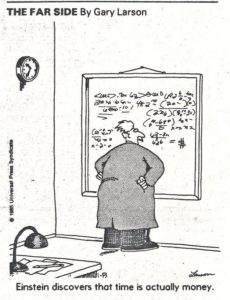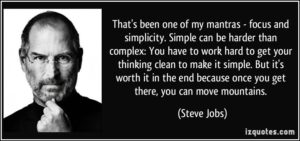I was recently asked why I was such an angry person. This question caught me off guard and surprised me greatly as I had never thought of myself as an angry person. Others may have, but not me. Before answering, I asked why it is that they thought I was so angry. They responded by saying that they thought I had become angry during the last project review we were in. I said they were incorrect, I did not get angry during the last project review. I had quickly and directly responded to what was unacceptable performance as reported in the review. I explained that I am not generally an angry person, but that I can get very direct, both with myself and with others, and will challenge unacceptable behaviors when commitments are not honored, and responsibilities are avoided.
I also said that one should not confuse the immediate and direct challenge to unacceptable performance, with anger.
I have mentioned before that my preferred method of leading is to focus on, and address the achievement aspect of performance. I tend to look at what has been done well and what has gone right, far more so than what has gone wrong or needs to be improved. But that doesn’t mean that failure to deliver on commitments, or objectives can be excused or ignored. And depending on the reasons for that failure to deliver, occasionally they must be dealt with directly.
I have found this to be the case more and more often in the matrix structured, process driven organizations of today. This is the structure where members of the “virtual” team actually report up through separate organizations, and where authority and accountability lines can have a tendency to blur. In this type of structure, it is not uncommon to find that it is felt that the process is the responsible entity for the project’s performance, and not the people that operate within it.
It is true that sometimes events occur that can make it exceedingly difficult if not impossible to honor our commitments. It happens. However, that does not remove the responsibility. Even with mitigating circumstances, the responsibility to try and deliver on agreed commitments, to the then best of an individual’s capabilities continues to exist. And most of the time I think everyone tries to operate in this manner.
However, occasionally, such as the afore mentioned project review, that was not the case.
When you are told that someone did not honor their agreed upon commitment because “they were busy”, that is an excuse, not an acceptable reason.
We are all busy.
I mentioned this this to the person who thought I was angry.
I also mentioned that I did a little further exploration during the project review before truly engaging on the failure to deliver on such a direct level. Were there unexpected issues or circumstances that arose? Were there other activities that got reprioritized, and if so why were this project’s commitments the ones that were deprioritized? In short, why did this happen?
If there had been reasonable responses to those questions, it would have resulted in the creation of a mitigation and response plan to try and recover from the missed commitment. There wasn’t. They just said they were busy.
Sometimes a direct and focused response to unacceptable performance can be perceived as anger, since it seems to occur less and less these days. The idea of individual deliverable ownership can have a tendency to fade in a large process driven project. If the process is the preferred methodology, and something is not achieved, how do you directly address the process? You don’t. You address those that are responsible for executing the process.
Anger in general has no place in the professional environment. When commitments are not honored and there are no acceptable or mitigating reasons, an immediate and direct response to that level of performance can be called for, not anger on a personal level. It is in short one of the best methods to communicate that the performance and the excuse are not acceptable.
The fact that it was so memorable by the participants in this case was because it has become such a rare approach to performance. As I said leading from an achievement focus usually provides the required drive to achieve the desired goals. The fact that the response in question was such a departure from the norm is what made it so memorable.
My litmus test for if the reason presented for missing a deliverable acceptable is very simple: Would it be acceptable to senior management?
It has been my experience that some of the best leaders are also some of the busiest people. The demands on their time and the breadth of the decision responsibilities require a continued focus on the objective and the components and deliverables that will be required to achieve them. Will telling them that you were too busy to get something done be acceptable?
The short answer to that question is “No”.
There is a fine line that should not be crossed in instances such as this. The focus needs to be on the performance, deliverable or objective, and not directly on the individual. Direct responses to performance issues cannot and should not become personal attacks.
In our now process driven, performance interdependent business world, any individual failure to deliver has a far broader affect that on just the specific individual in question. Knock-on delays and other dependent deliverables will also suffer. Everyone’s performance can and will suffer to some extent.
As we become more “PC” (which in this instance means “Process Correct”) in the business world, we tend to attribute both the successes and failures in business to the process and not the people. Performance issues become obfuscated as process issues. And as a result, we have a tendency to try and address the process instead of the performance within the process.
In the past direct and immediate feedback, both positive and negative was viewed as a cornerstone of a strong performing team. It is now difficult to single out an individual’s performance, either positively or negatively without the interaction being construed as either lavish praise, or anger. Neither of which are particularly conducive to positive team alignment or performance.
We all can be and should be sensitive to a certain extent about the feedback we receive. It should help and serve to drive us forward. We also need to understand that it is our own individual behaviors and performance that serve as the baseline for whatever feedback we receive. We also need to understand that while the feedback may be specific to an individual, it must be focused on specific performance items and cannot be construed as being personal in the way it is delivered.
Anger is a personal thing. It doesn’t belong in the professional environment. We are all human and sometimes it is hard not to get angry. Still we must try to maintain our focus. The focus must always be on the performance of the individual, and not the individual themselves. When dealing with performance we must stay at the professional level and not the personal one.




